Blockchain is helping build a new Indian city, but it’s no cure for corruption
Last year, Tharigopula Sambasiva Rao entered into a deal with the state government of Andhra Pradesh. He gave up six acres of his agricultural land in his village, Sakhamuru, in exchange for 7,250 square yards—6,000 square yards of residential plots and 1,250 square yards of commercial ones.


Last year, Tharigopula Sambasiva Rao entered into a deal with the state government of Andhra Pradesh. He gave up six acres of his agricultural land in his village, Sakhamuru, in exchange for 7,250 square yards—6,000 square yards of residential plots and 1,250 square yards of commercial ones.
In February this year, the 50-year-old farmer got his plots registered at the sub-registrar’s office in Thullur town of Guntur district. He booked an appointment through a government-run app and turned up with his Aadhaar number, a unique identity provided by the government of India to every citizen. Rao’s land documents, complete with a map, certificate, and carrying a unique QR code, were prepared by officials and sent directly to the registration office, all done in just a couple of hours.
Kommineni Ramanjaneyulu, another farmer from around Thullur, exchanged 4.5 acres for 10 plots. The 83-year-old was wary of this new technology deployed to streamline the land registration process. However, he was relieved to see the documents for his new assets in his native language, Telugu. There was no information gap.
Rao and Ramanjaneyulu are among over 24,000 farmers from 22 villages in Guntur who have bartered their assets to the government. Because the newly formed southern Indian state is in the process of gathering 217 square kilometres—over 53,000 acres—of farmland to build Amaravati, its capital city.
The entire documentation process for this massive exercise is based on blockchain. The decentralised distributed ledger system—central to cryptocurrencies like bitcoin and ether—can create foolproof digitised land registries of the residential and commercial plots allotted to farmers. It essentially serves as a book-keeping tool that can be accessed by all but is owned by none.
“Now we don’t have the headache of hiring a document writer to prepare our papers. The records are generated and sent automatically to the registration office,” said Rao, clad in an orange-and-black lungi and a crisp white shirt. “With this new technology, we knew there would be full security, no double registrations, no duplicates.”
In theory, blockchain can store land documents in a tamper-proof, secure network, reducing human interventions and adding more transparency. Data is solidified and the transaction history of a property is fully trackable. This has the potential to reduce, if not entirely prevent, property fraud. But unlike in the case of bitcoin, the blockchain utilised by the government agency in charge of shaping Amaravati is private.
So, despite the promise on paper, local landowners and farmers remain convinced that there’s no escaping red tape and corruption yet.
Why Amaravati, why blockchain?
The new state of Andhra Pradesh was formed in 2013 following the bifurcation of a larger Telugu-speaking state, also called Andhra Pradesh.
While the other new entity born from this division, Telangana, had IT hub Hyderabad as its capital, the new Andhra Pradesh had to be satisfied with just a few towns like Vijayawada, Guntur, and the harbour of Visakhapatnam. Thus, the quest for a new capital.
Mostly an expanse of tomato, banana, and okra fields today, with colourful two-storeyed houses sprinkled across small villages, the plan is to turn Amaravati into a state-of-the-art smart city, complete with a hyperloop route connecting it to Vijayawada, the nearest big town, 40 km away.
Land in the region, low on industrial development, first began to be pooled in December 2014.
The idea of such pooling is not new in India. Across the country, highways, government buildings, and industrial townships have risen on such collated property. Yet, ownership and acquisition remain incredibly acrimonious, frequently stalling even the most well-resourced projects, and often leading to violence and death.
So, led by chief minister Nara Chandrababu Naidu, Andhra Pradesh decided to use blockchain to avoid the minefield—reams of badly maintained paper records, exposed to damage, decay, and tampering—that India’s byzantine land-record system can be. Even digital land records are vulnerable to manipulation by government authorities and fraudsters. So much so that the distortion created by large-scale corruption and inefficiency in India’s land markets has shaved 1.3% off the country’s GDP every year, according to consulting firm McKinsey.
“We want to give a very clear, risk-free kind of title to the farmers,” said Cherukuri Sreedhar, commissioner of the Andhra Pradesh Capital Region Development Authority (CRDA), the agency responsible for designing and building Amaravati. “One of these steps (blockchain) is to ensure the data that is with the CRDA is safe and can be traced back at any given point of time so security of title is always maintained.”
The promise of blockchain
Rao and Ramanjaneyulu, the two Guntur farmers, twirled their brows in confusion at the first mention of the term blockchain.
But on seeing a sample blockchain certificate and plot map, their faces lit up. “Ah this, yes,” Rao exclaimed, his thick black spectacles dancing on the bridge of his nose.
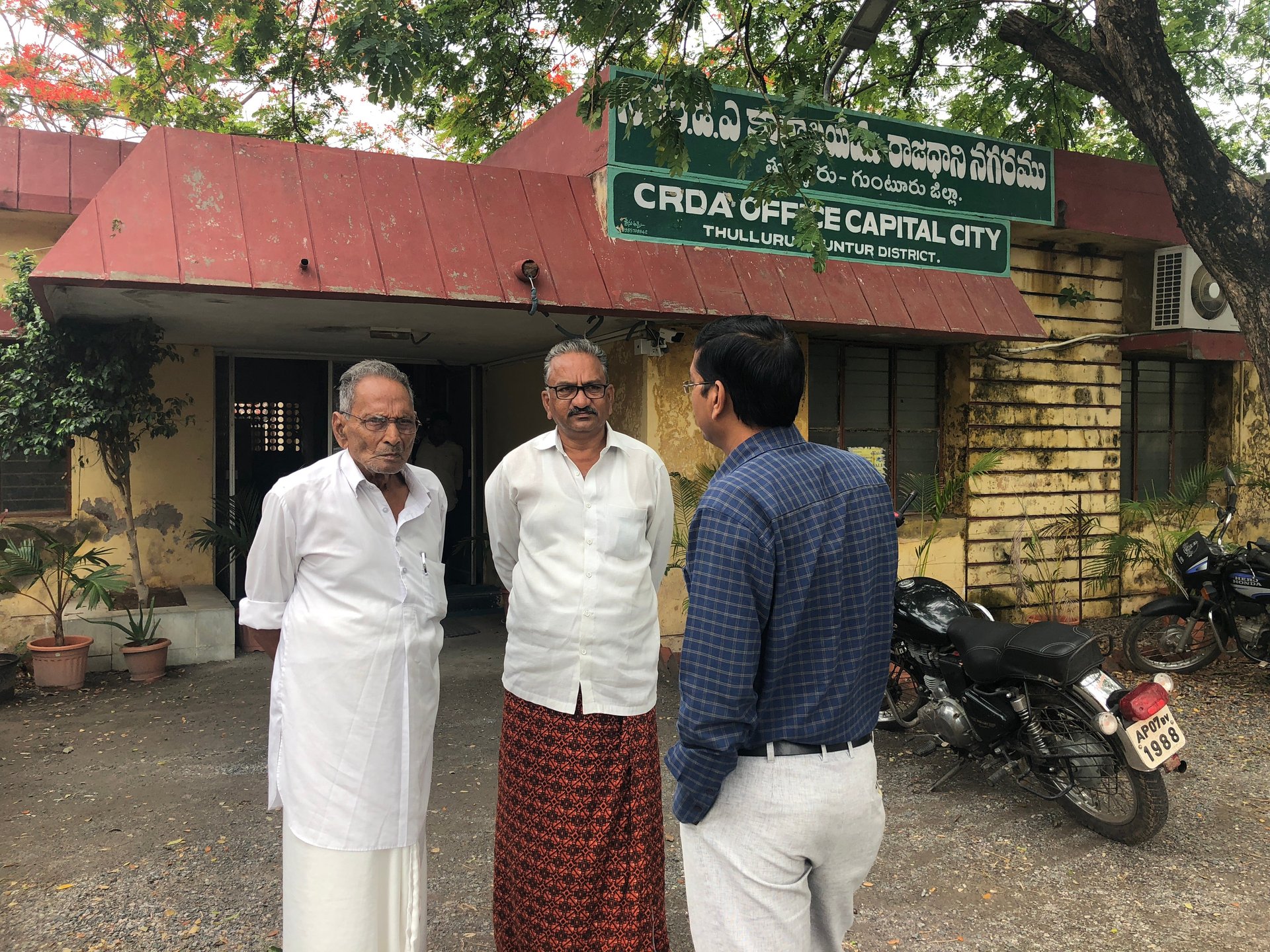
“CRDA officials came to our village and told us about this new technology that would give us clarity with design maps,” Rao said.
That’s the promise CRDA made when, in December 2017, it began registrations using documents generated with information drawn from the blockchain. The agency sent officials to village after village to educate landowners about the system.
The entire process—allocating plots, registration, storing the data—is fully automated. As ownership rights are transferred through land-pooling cases, landowners get plots along with an annual compensation of about Rs50,000 ($730) for up to five years, said PV Suresh Kumar, who leads geographical information systems (GIS) at the CRDA office in Vijayawada. GIS is a team within the CRDA that is responsible for plotting the base map.
To avoid confusion, the exact locations of these plots are all recorded on the blockchain. A total of 58 attributes—names, Aadhaar numbers, mobile numbers, boundaries marked with latitude and longitude coordinates, neighbouring plots, roads, and so on—are linked to each property in the database.
To store this information using cryptography, the government worked closely with Zebi, a blockchain-based solutions provider with a 30-member team of graduates from the Indian Institutes of Technology, the Massachusetts Institute of Technology, and Oxford University. By March this year, the company moved 83,000 records to the database. This took just a few weeks—costing only around Rs5 per record—since the CRDA’s records were fully digitised anyway.
Some 40,000 of these plots have already been allocated to over 24,000 farmers in the area. The remaining have been assigned to the government, research institutes, and so on.
For administrations that rely on paper trails, the process would have been more time-consuming in all likelihood, requiring more manual labour.
Once recorded, the data cannot be altered retroactively; all subsequent modifications are logged. Only a few senior CRDA officers like the commissioner and the IT director can access the database, and that, too, only after several layers of permissions.
“Earlier, the tech admin could modify data, anyone could. We’ve seen instances of this happening in government departments all over the world. An audit trail log is erased by a hacker or an insider. They write programs to manipulate data and delete traces of how it was manipulated,” said Babu Munagala, co-founder and CEO of Zebi. “All of those dangers go away (with blockchain).”
The information is also accessible to all landowners online through the CRDA’s website or the MyAmaravati app, where they can log in securely with their Aadhaar number. The CRDA claims that digital literacy across Amaravati’s villages is high with at least one family member acquainted with the use of mobile phones and internet.
“They don’t have any doubt about blockchain really,” said BL Chennakesava Rao, CRDA’s director of land issues, who works in Thullur. Until now, farmers whose land was being pooled could only see the field measurement book and the CRDA’s manually prepared survey map. “Now there is accuracy and correctness, secure documents. This is one of (the) safest measures, they can understand that,” he added.
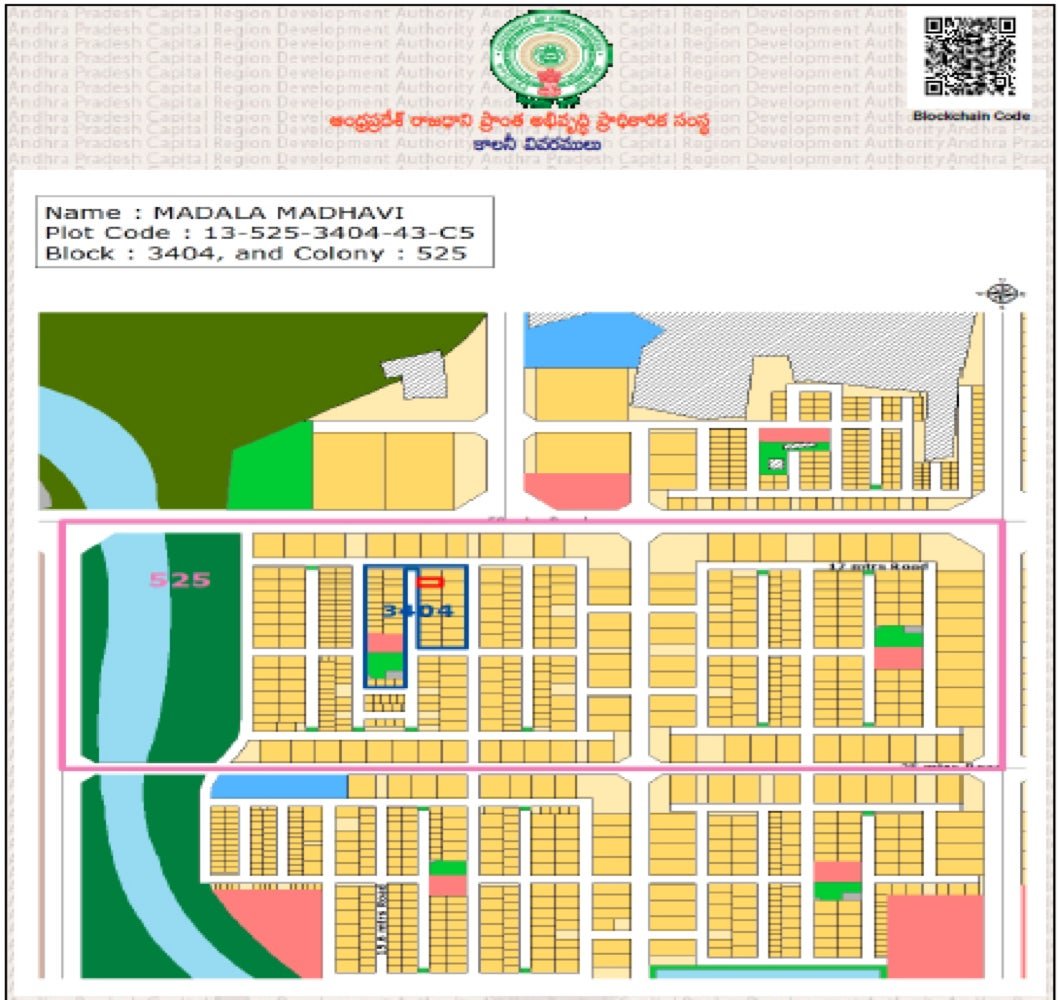
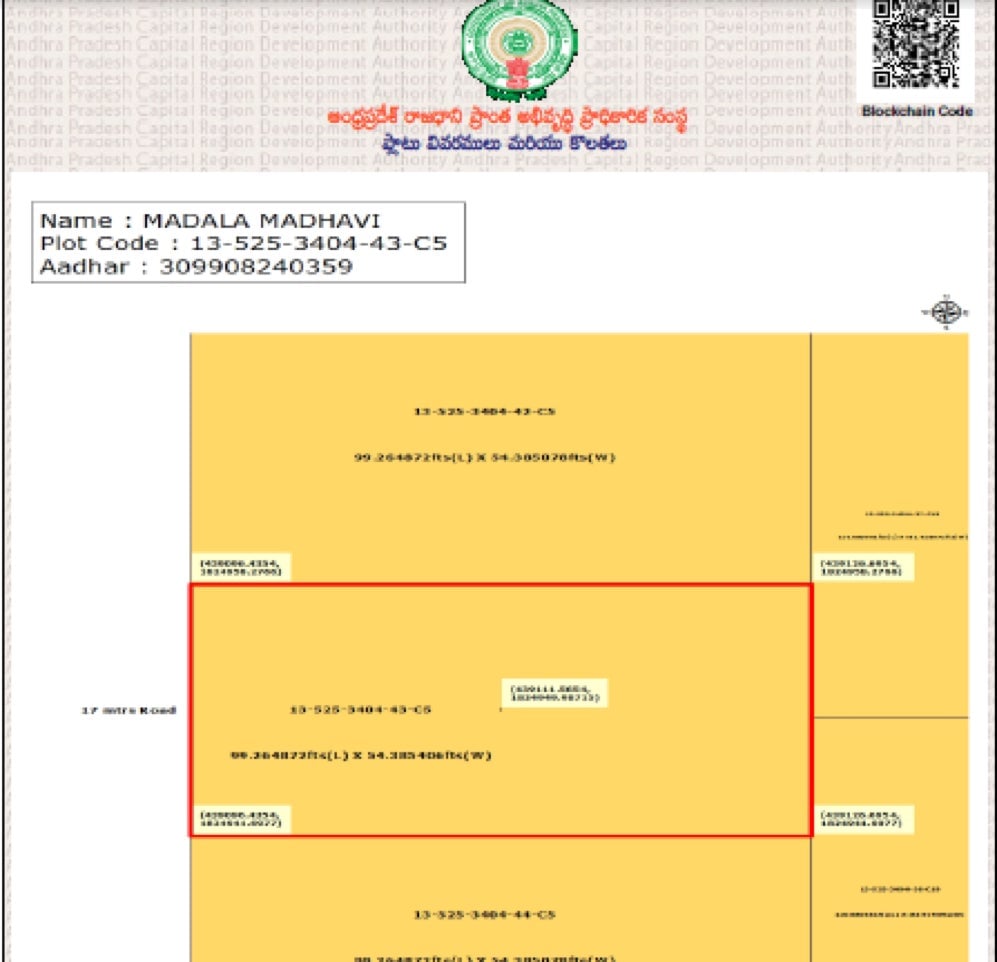
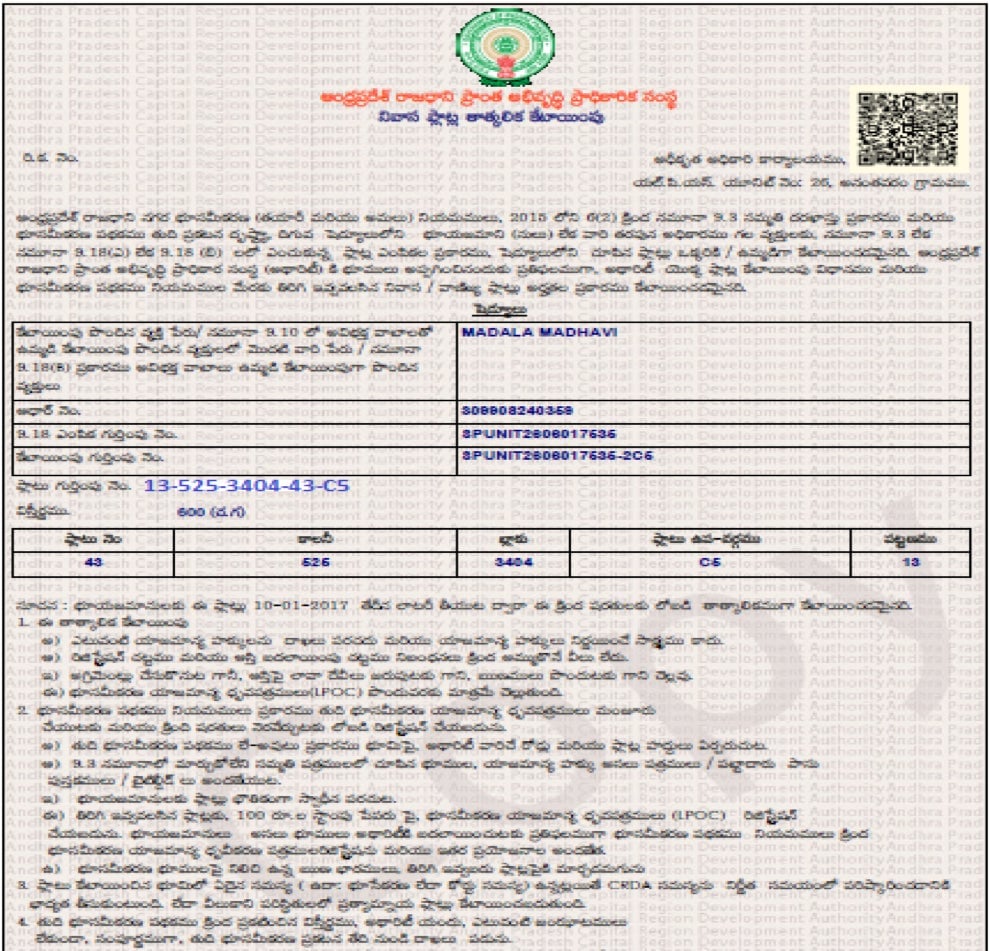
The CRDA officials insist that data on the blockchain serve as indisputable proof in cases of disputes over ownership, even after redevelopment. “If you’re away and people come and encroach your plot or even after there is too much development and it’s difficult to recognise your own plot, this is a guarantee kind of thing for farmers and landowners,” said NS Sathya Sai Baba, the agency’s IT director.
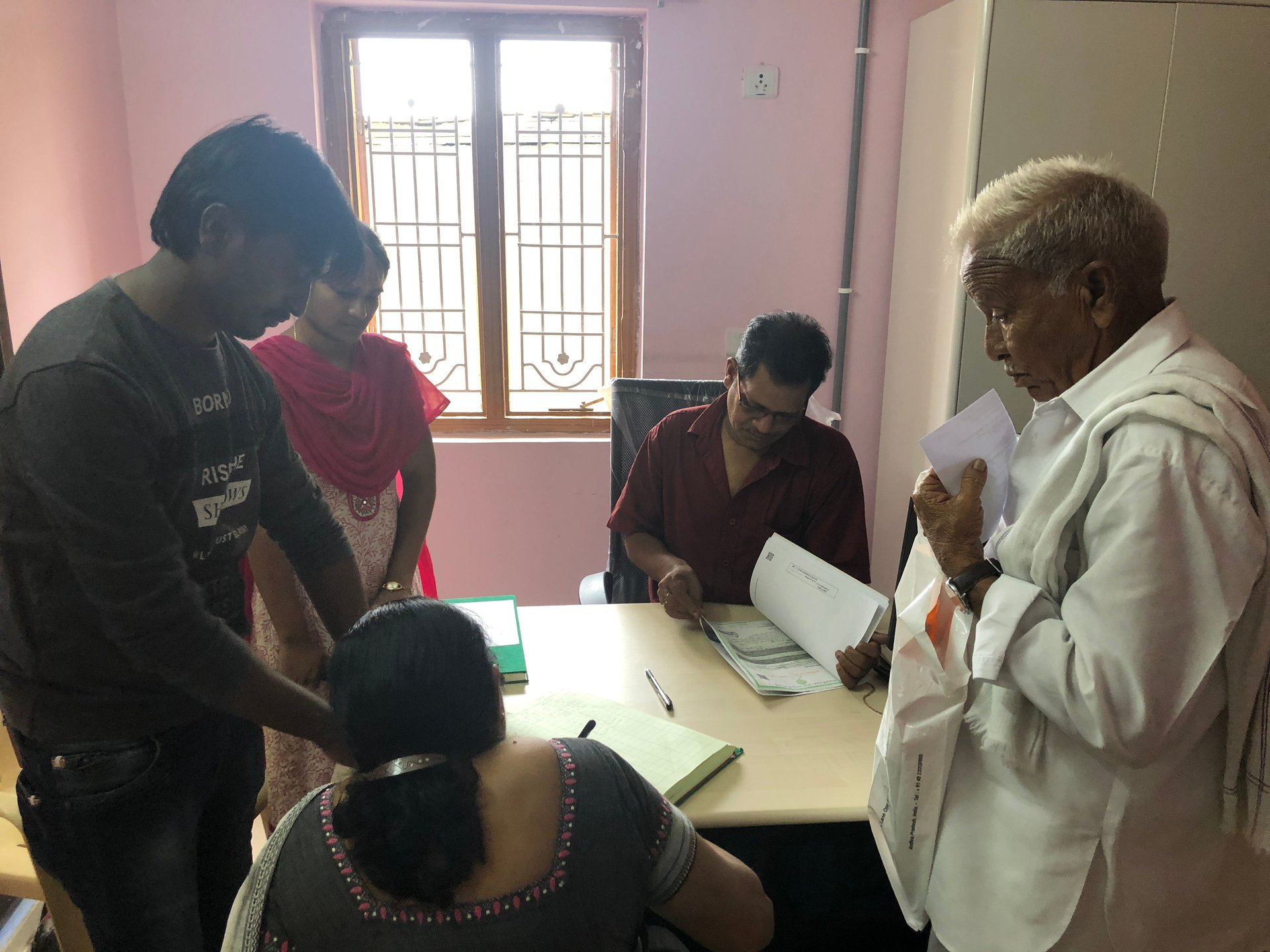
Blockchain also saves money. Earlier, farmers had to pay a document writer Rs5,000 or more to prepare registration papers. Now, the government is facilitating system-generated documents at zero cost. The QR code-marked documents sourced from the blockchain are sent directly to the land registrar at the time of a plot owner’s appointment.
What’s the catch?
However advanced, technology can only go so far to avoid the pitfalls of India’s murky land-acquisition process.
Davuluri*, a scrawny man in a white shirt and a black lungi, sat on a white plastic chair in the living room at the home of Mallela Seshagiri Rao, president of the Capital Region Farmers Federation, which opposes the government’s land-pooling scheme. He was one of 30 farmers from over a dozen villages who had assembled in Rayapudi, a tiny village between Vijayawada and Amaravati, with a long list of grievances against the state authorities.
The 62-year-old co-owned 7.8 acres with three of his brothers, all of whom gave their shares up to the government. He, though, was still holding on to his quarter. The farmer alleged that a deputy collector began harassing his family into giving up his portion. The same official also threatened to create fake documents and snatch his land.
Davuluri’s case isn’t an exception. Ginjupalli*, 59, a resident of Malkapuram village—home to a temple that Amaravati officials want to market as a tourist attraction—complained that the government resorted to cutting off electricity and water supply to pressure him into surrendering it.
“A case in point to note here is that such baseless allegations are made by people who have not participated in the land pooling process and on hearsay,” Sreedhar said in response to the farmers’s allegations. “They have no first-hand experience of the trust, relation of partnership, and transparency in the system.”
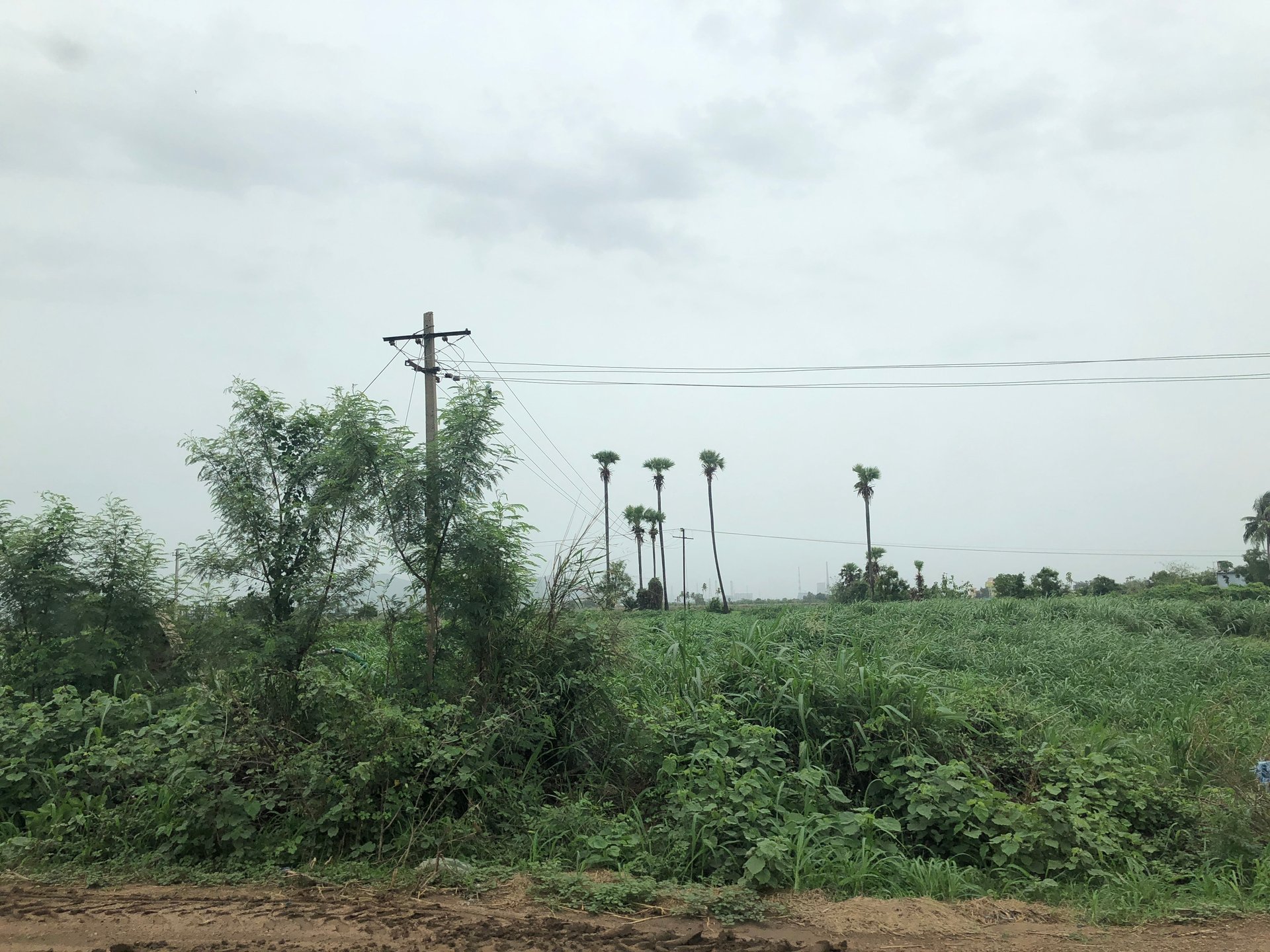
Of the 217 square kilometres required for Amaravati, nearly 15% still shows as vacant on GIS’s final base map. Some of this is owned by the government but a fair share is disputed. The farmers who own parts of this portion are either fighting ownership battles of their own, or are resisting a sell-out to the CRDA.
Having seen the government’s dirty tricks, most of the farmers gathered at Rayapudi aren’t buying the claim that the system is tamper-proof—especially at the stages before the information is moved to blockchain. After all, assignments and verifications are still being done by revenue officers on the ground.
That the Andhra Pradesh government is using a private blockchain complicates things further. The public can view information but not directly monitor whether any illicit changes have been made to their records. They have to go through the usual red tape to get those answers. The system may not be susceptible to hacking, but authorities could deliberately enter wrong information or refuse to reveal instances of fraud even if they are logged. This is the farmers’ biggest concern.
“The tampering cannot be stopped. If you give the right people a lot of bribe, they will go in and change the record,” said Seshagiri Rao. Nearly $700 million is paid in bribes across land registrars in India, an Andhra Pradesh government official estimated last year, and even probes into these matters are often flawed.
This addition of a middle-man can throw a spanner in the works even for a relatively hack-proof technology like blockchain. “Land registries generally speaking won’t make too much sense if you still have a government office in the middle which you need to trust in order to transfer property,” said Markos Zachariadis, associate professor at Warwick Business School and a fintech research fellow at the University of Cambridge. Of course, it helps if a record is lost or tampered with, or damaged in a natural disaster. But it does little to curb manipulation by those in charge of the data being transferred to the blockchain.
There are ways to mitigate the risk of human interference by ensuring that the new data is ratified by a second party or multiple permissions are needed to tweak the database, said August Botsford, technical director at Chromaway. The Swedish blockchain firm ran a demo for the Andhra Pradesh government with sample land registration data between August and October last year, storing title information on the world’s first consortium database called Postchain, the company’s pioneering wherein an online database and blockchain work in tandem.
But landowners have little faith in a system that relies on the government to put its own safeguards in place. In fact, even farmers who have allowed their land to be pooled, registered their plots, and accessed the maps online feel left in the dark.
Raviprasad*, a 26-year-old from Velagapudi, exchanged 12 acres for 10 plots. Although he has registered them and has the papers already, he has not physically been shown where his plots are, nor is he aware of any sign of development there. “We were assured the plot by 2017…it is now 2018,” he rued. He is convinced that prime localities in Amaravati are being assigned to politicians, while farmers like him are being shortchanged.
The allocations are supposed to follow a set pattern: For one acre of fertile land, 1,000 square yards of residential plots and 450 square yards of commercial plots are allotted. Giving up an acre of dry land begets 1,000 square yards of residential plots and 250 square yards of commercial plots. However, the ground reality is not as clear-cut. At least three farmers complained that their neighbours got better deals from the government than they did. A few farmers belonging to tribal communities revealed that they are being offered monetary compensation of a meagre Rs2,500 monthly and no plots—an unfair proposition for families of between five and six members living under one roof.
“We are not bothered about QR codes and blockchain. The Aadhaar technology already uniquely links our identity to our plot,” said Dhulipala, a real estate developer and businessman who has exchanged 15 acres in Mulagapudi for six plots. “We’re bothered about actually seeing the land the government has promised.”
The right direction
Once you look past all the pomp and celebration around India’s first large-scale blockchain project, it is clear that the old ghosts of the country’s land acquisition process still haunt Amaravati.
“Whatever data we are trying to (put on the) blockchain, the data need to be purified. As a department, your responsibility is to make sure you are digitising the correct record,” admitted CRDA commissioner Sreedhar.
But he insists there is a payoff. “Tomorrow or after five years, if somebody tries to meddle with this record, that also will get recorded. The original record will remain unadulterated forever,” he added.
Although it won’t bring land disputes to a halt, in the long run, blockchain will put an end to most land-related misgivings and increase accountability. “No technology can entirely abstract responsibility away from the users and administrators of a system,” said Chromaway’s Botsford. There is, at least, an “increase in transparency and integrity assurances offered by blockchain in the land registry space,” he argued.
And once Amaravati is built, blockchain could go beyond tackling ownership issues, allowing people to collateralise property, get loans, and invest against them. Any activity—a stay by courts, building construction approvals, transfer duty paid on a property—will be recorded and be permanent.
“With the clarity it offers, I’m sure this system gives me full security,” Rao, the farmer, said, “now and for the years to come.”
*Names of some farmers have been altered to protect their identity.